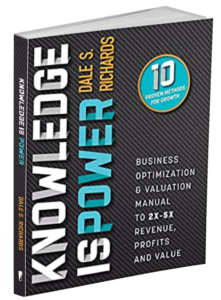Common Valuation Errors
Internet Search – What is the correct Cost of Capital Number to Use?
Common Valuation Errors. There are rules of thumb out there that give advice on what cost of capital or discount rate to use for a valuation present value calculation. A search on the internet can yield the following information:
Startup Company……………20% – 80%.
Growth Phase Company….15% – 40%.
Mature Company…………..10% – 25%.
What number should you pick? If you use a rule of thumb, instead of your company calculating specific risk cost of capital, or discount factor with the method just described, it can create large errors. An example follows that illustrates the potential errors.
IT IS VERY IMPORTANT TO GET AN ACCURATE DISCOUNT FACTOR.
EXAMPLE OF RULE OF THUMB DISCOUNT FACTOR (DF) ERROR:
Suppose a company that has the following traits:
Revenue growth: $5M – $13 M over 5 years
Net Benefit Stream from $500k to $1.4M
IF YOU MISS THE CORRECT DF by Ten Percent (10%)
RESULTANT ERROR: $1,400,000
IF YOU MISS THE CORRECT DF BY: 20%
RESULTANT ERROR OF $3,800,000!
Before vs. After Tax Financials Match with Discount Factor
If you use Before Tax Financial data with an After Tax Discount Factor, it will create a large value-over-statement error.
With the same example above data points of $500k to $1.4M benefit stream, if you mix before tax financials with after-tax discount factor it could create an overstatement of value, of $1.8 Million.
No Terminal Value
A business valuation typically uses five years of financial data but the business may operate for another 20 years. What credit do you get for the 6-20 years out in the five-year business model? NONE!
Errors occur when a five-year discount cash flow is analyzed without consideration, for an ongoing business. To consider the future operation, a terminal value is calculated.
If you use the same data previously presented and forget to include the terminal value, the company value would be understated, by $1 to $4 Million.
Once you obtain an overall company value, there are three potential discounts to consider. The discounts include:
- Minority Discount,
- Marketability Discount, and
- Start-up or Early Stage Company Discount.
- First, consider the marketability discount.
- Marketability Discount
What is marketability? Marketability relates to how easy it is to sell or buy the company’s stock.
Why would you discount equity stock or units for marketability? If you have publically traded shares, you can buy or sell your stock whenever you want. There is no discount for marketability.
If you are a privately held company, when or how do you liquidate your shares? Typically, only when the owners decide to sell, or you have to seek owner approval to have them buy the shares back. You do not have any control of what they decide to do. Correct?
The marketability discount that would apply is situational. If the owners do not plan to sell or buy the shares then the discount could be 50+ percent. National studies show that a discount ranges from 10% to 52% depending upon the situation.
ABOUT DALE S. RICHARDS:
Dale S. Richards specializes in management, marketing, operation optimization & business valuation consulting and is a 30+ year turnaround expert. He has implemented success concepts into results in 150+ companies. Dale is a Certified Valuation Analyst (CVA) with NACVA, Eight-Year Vistage Chair & International Speaker.






